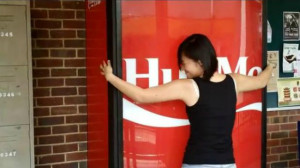Ah, so the conspiracy theorists are at it again.
911 was a plan of the US government, the Holocaust was a hoax and omnichannel doesn’t actually exist to make the customer experience better - but it sure does help those financials. What am I talking about? Many Fortune 500 retailers have started to blend their online and brick and mortar store sales as a new consolidated line in the financial reporting, “omnichannel.”

“Yes, om-ni-chan-nel. It just means we can add our good numbers to our bad numbers to make them look like better numbers!”
Some are claiming that this was the plan all along by CEOs. They loom over the billions of dollars in physical store investments that have lackluster growth rates, if any, but healthier percent growth rates online. What to do? Blend it all together of course - because these savvy brands no longer segment their brains into the rigid constructs of online and physical stores.
Helping the annual report look a little rosier may be icing on the cake, but I doubt its the reason we’re seeing this change. These leaders understand the new age of customer experience as an anytime, anywhere, always-on relationship. So, of course, it’s irrelevant where and how the customer wants to be served - a sale is a sale is a sale. That is the purest form of the omnichannel revolution.
Regardless of whether you think that it more accurately reflects the business and proper accounting information, directionally this merging of online and in-store is a signal that something important has started to happen. From the top down, the hybrid version of online and brick and mortar – some often describe as ‘clicks and mortar’ – is being born.
For those of us who were involved in digital over the past ten years, we hear things now
that are reminiscent of the heroic battles between television and the Internet. For years, pundits preached the death of television, giving rise to the Internet revolution. Ten years onward and most households still have multiple televisions, just side by side with  the 7, 9 and 11 inch tablets and at least iPhone and Android device. It’s a hybrid reality, not an absolute turn of the tides. Yet some people are still asking when the TV tipping point is coming. Google’s Eric Schmidt had a great response last week when asked this tired question about YouTube vs traditional TV. His response? “It’s not a replacement for something that we know,” “It’s a new thing that we have to think about, to program, to curate and build new platforms. “http://www.telegraph.co.uk/technology/google/10033473/Eric-Schmidt-television-is-already-over.html
the 7, 9 and 11 inch tablets and at least iPhone and Android device. It’s a hybrid reality, not an absolute turn of the tides. Yet some people are still asking when the TV tipping point is coming. Google’s Eric Schmidt had a great response last week when asked this tired question about YouTube vs traditional TV. His response? “It’s not a replacement for something that we know,” “It’s a new thing that we have to think about, to program, to curate and build new platforms. “http://www.telegraph.co.uk/technology/google/10033473/Eric-Schmidt-television-is-already-over.html
Omnichannel retail represents many of the same things we considered over the last ten years in the TV vs Internet saga. Today we hear that the High Street is dying, stores are shutting down and those that are open are mere showrooms for customers who are simultaneously using the Amazon Price Check app to buy online for $10 cheaper. These aspects are stages leading an inevitable evolution of the retail experience. Much like the home television scenario mentioned earlier, I might imagine the omnichannel shopping experience in five years time looks something like this:
- The standard practice of long term contracts for rented square footage won’t be the norm.
- The supply chain will adapt even more than it already has to accomodate instant same day shipping but the quantities of goods stored in any one location will be less.
- Storefronts will really be about showcasing brands and giving customers an experience with a product, rather than just a location to acquire one
Therefore, the mega stores we know today most likely won’t exist, or at the least they’ll be much less common. Shopping in the physical world will be about experience, the emergence of same day shipping from a store or website will make the timeliness less of a factor and this will accentuate the virtues of smell, taste and touch that the physical store allows.
The creative elements that advances in technology will offer in this area are unknowable as the pace of innovation in that space is fiercely rapid. But one thing is certain, you won’t come to the store only because it may happen to be more convenient. Customer experience will take on a whole new meaning of using the feelings, emotions, of mind and body to fully engage with a brand.
So it all starts from the top and those financials and thoughts that surround them are the core movers of the business. If ever there was a sign that omnichannel is real and bigger than we yet know, this is surely one of them. We’re excited to be part of the journey.
